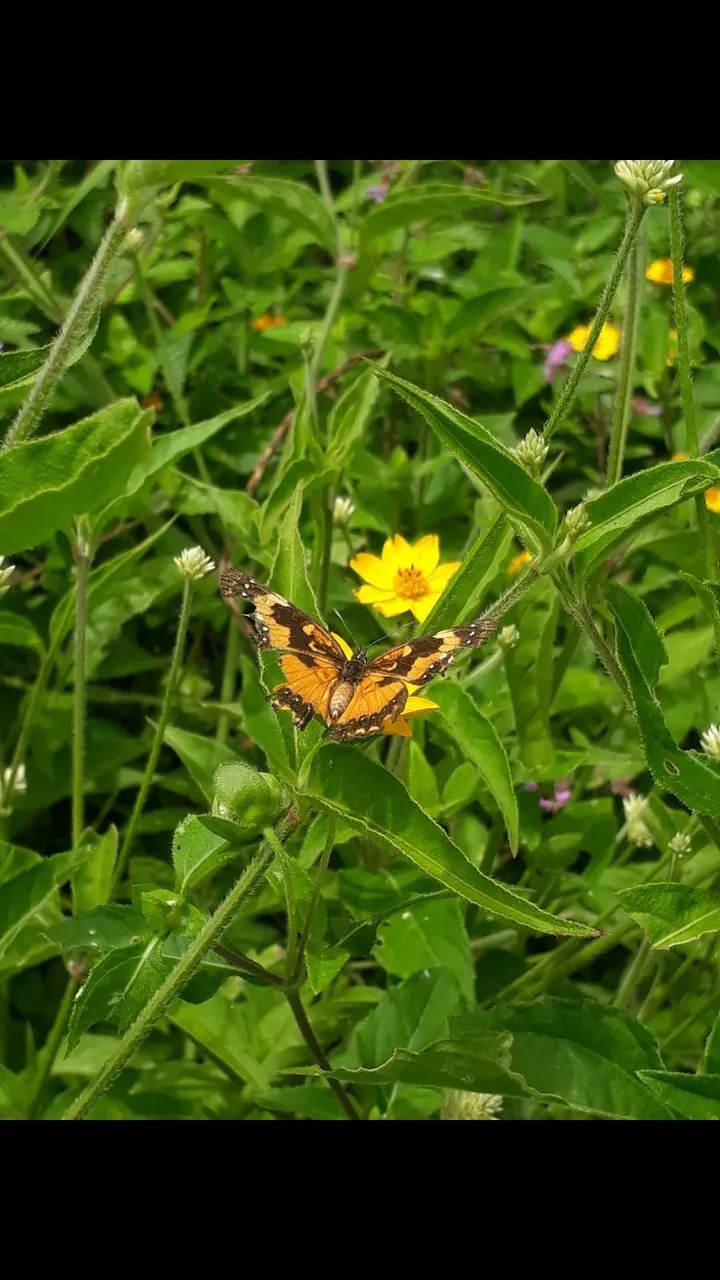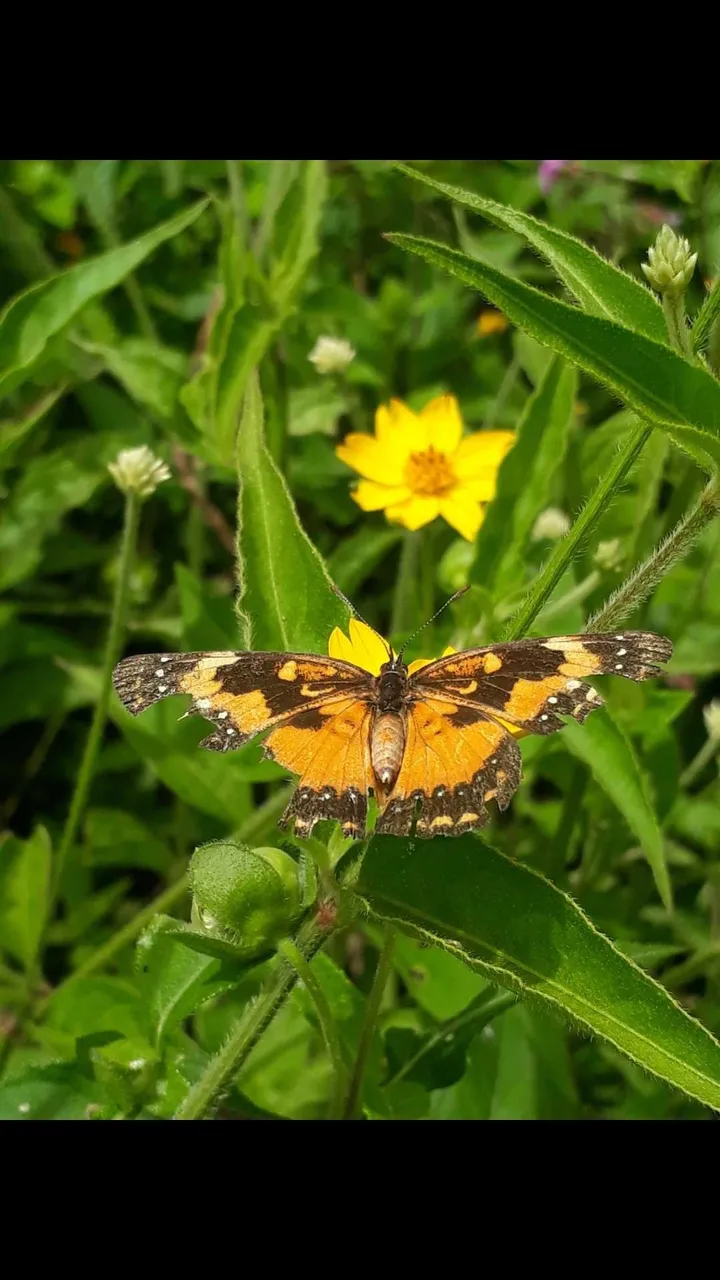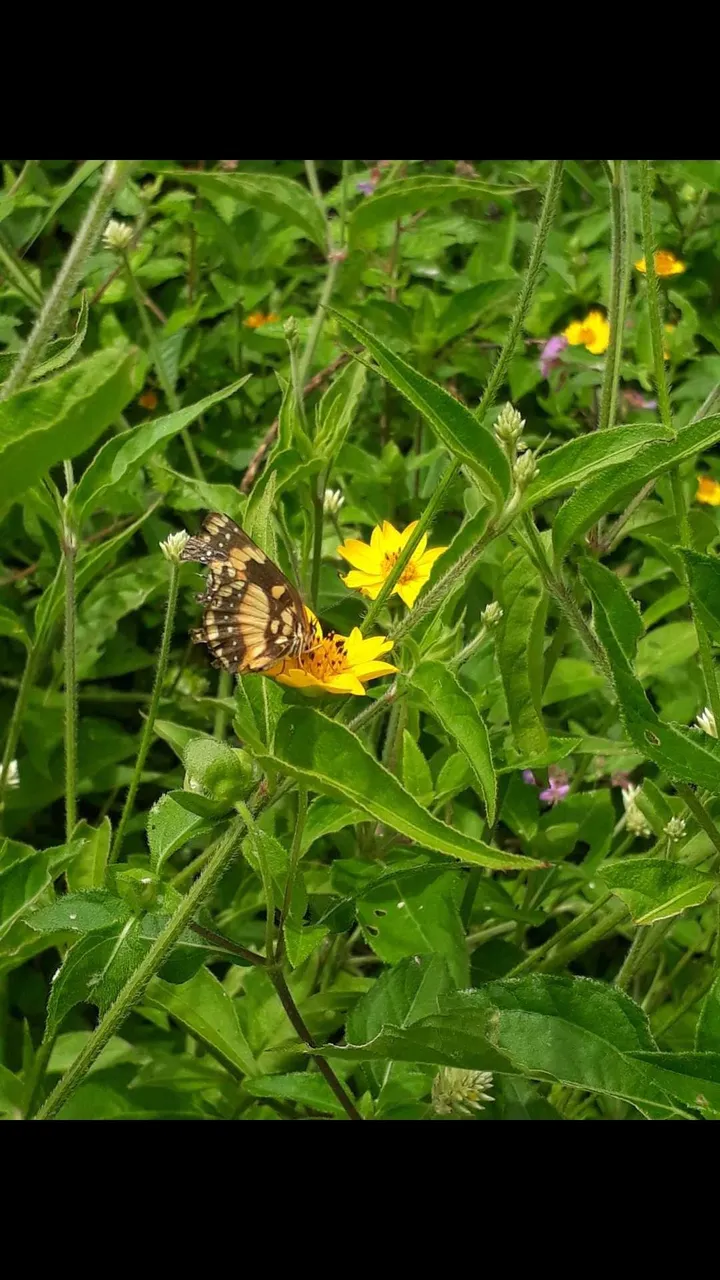
Una mariposa tiene cuatro alas, dos alas delanteras y dos traseras. Estas están conectadas a los segundo y tercero segmentos torácicos (meso y meta tórax). Los fuertes músculos en el tórax mueven las alas hacia arriba y hacia abajo en un patrón en forma de ocho durante el vuelo. Cuando la mariposa es totalmente adulta emerge de su crisálida, y sus delicadas alas están arrugadas y húmedas. La mariposa se cuelga boca abajo y bombea sangre hacia las alas para inflarlas. A continuación, debe esperar a que las alas se sequen, antes de poder volar. Cuando estas frágiles alas se rompen, no se reparan.
A butterfly has four wings, two front wings and two hind wings. These are connected to the second and third thoracic segments (meso and meta thorax). The strong muscles in the thorax move the wings up and down in an eight-shaped pattern during the flight. When the butterfly is fully grown it emerges from its chrysalis, and its delicate wings are wrinkled and damp. The butterfly hangs upside down and pumps blood to the wings to inflate them. Next, you must wait for the wings to dry, before you can fly. When these fragile wings are broken, they are not repaired.

Color: Muchas mariposas y polillas son de colores brillantes, mientras que otras son grises. A menudo poseen patrones ultravioletas en las alas que no podemos ver, pero que pueden ser vistos por otras mariposas.
La coloración de estos insectos les sirve para muchos propósitos, incluyendo;
Camuflaje, en el que el color del animal le ayuda a mezclarse con el medio ambiente, ocultando al insecto.
Advertencia, Los colores brillantes en las alas de mariposas y polillas significa que tienen mal sabor o son imitadores de aspecto similar a las mariposas toxicas.
Atraer y encontrar pareja, que buscan ciertos colores y patrones.
Engañar a los depredadores haciéndoles creer que son más grandes de lo que realmente son.
Color: Many butterflies and moths are bright colors, while others are gray. They often have ultraviolet patterns on the wings that we can not see, but that can be seen by other butterflies.
The coloration of these insects serves them for many purposes, including;
Camouflage, in which the color of the animal helps it mix with the environment, hiding the insect.
Warning, The bright colors on the wings of butterflies and moths mean they have bad taste or are imitators that look similar to toxic butterflies.
Attract and find a couple, who look for certain colors and patterns.
Deceiving predators by making them believe they are more.

Absorber calor: Las escalas de colores oscuros absorben el calor del sol muy bien. Como todos los insectos, las mariposas son de sangre fría. Cuando tienen frío, se calientan al sol.
Acoplamiento de las alas: Durante el vuelo, las alas anteriores y las alas posteriores se mantienen unidas y funcionan como una sola.
Absorb heat: Scales of dark colors absorb the heat of the sun very well. Like all insects, butterflies are cold-blooded. When they are cold, they warm up in the sun.
Attachment of the wings: During the flight, the forewings and the hind wings are held together and function as one.
Alas en reposo: Cuando está en reposo, las mariposas mantienen sus alas verticalmente.
Wings at rest: When at rest, the butterflies keep their wings vertically.
Fuente:http://www.mariposapedia.com/alas-mariposa/
